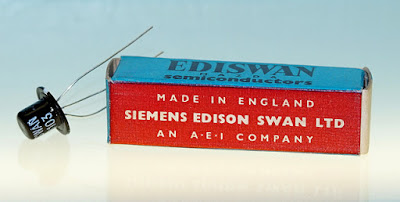Fairchild Semiconductor's First Product

Double diffused base silicon mesa transistor 2N697, Fairchild's first product was launched commercially at the Wescon show in August 1958. Fairchild's first product was a commercial success due to its benefits over other transistors on the market. IBM were Fairchild's first customer, using the 2N697 as a ferrite core memory driver on the XB-70 avionics contract. IBM paid $150 per transistor for the first order, 30 times the industry price. The Fairchild 2N697 was silicon, hence it had high temperature benefits over germanium and had lower power dissipation than other silicon equivalents, due to Fairchild's diffusion process. Fairchild Semiconductor (in the late 50s and 60s) were one of the most innovative and influential companies in semiconductor history, developing the planar process and the first integrated circuits.






